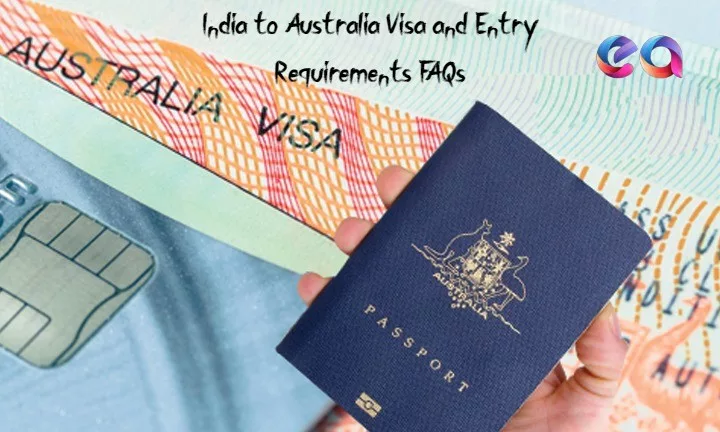
Australia is a popular destination for many people. However, there are some countries that might be more suitable than Australia. Before you make your travel plans to Australia, it’s important to know what documents you need and which ones can be used instead of your original passport. In this article, we will help you understand what visa requirements apply when traveling between India and Australia as well as how to apply for an eVisitor visa if you’re not an Indian citizen.
Do I need a visa to travel?
A visa is required to enter Australia.
The Australian Department of Foreign Affairs and Trade (DFAT) has a full list of Australian visas and their eligibility criteria on its website. For example, if you are from China, you will need to apply for an Electronic Travel Authority (ETA) before travelling to Australia; however if you are from India or Pakistan, then there are no ETAs available for your country at this time. In order for your passport to be considered valid for entry into the country, it must be machine-readable and contain an ePassport chip (which can be purchased online).
If possible – it’s best not to purchase a new passport until after arrival in Australia as some passports have been known not pass authentication tests during travel through customs checkpoints due to incorrectly printed data on the document itself; therefore make sure that any documents related such as birth certificates etc., are also updated with correct information prior arrival!
What are the types of visas?
There are two types of visas:
- eVisitor visa (for tourists, business visitors and people visiting family and friends)
- e600 visa (for people who want to work in Australia).
What’s the difference between an eVisitor and an e600 visa?
The eVisitor is a multiple entry visa, which means you can visit Australia for up to three months at a time. If you’re on an eVisitor and want to stay longer than three months (for example, if your trip is more than one year), then it’s recommended that you apply for an e600 single entry visa instead.
The main difference between these two types of visas is that while both allow holders unlimited entries into Australia over the period they are valid for—the difference being only how many times they can use those entries during their time here. For example: An e600 allows people who hold it 12 months from date of issue without having any restrictions regarding when they enter; however in contrast this means they cannot stay in Australia after their initial 12 month period ends as there would be no way for them ever re-enter again without applying again first!
Can I get an eVisitor if I am not an Indian citizen?
You can apply for an eVisitor visa if you are a citizen of India. However, this visa is only available to short-term visitors who intend to visit Australia for business or family purposes (other than in the course of any work).
You must be able to demonstrate that your visit to Australia will not interfere with your employment or education; and if you are coming from another country, that the purpose of your visit is genuine. You must also show evidence that you have sufficient funds available for expenses during your time in Australia (this may include a bank statement or credit card statement).
If these criteria are met and there are no other complications arising from applying online then it should be relatively straightforward!
How do I apply for an eVisitor visa?
To apply for an eVisitor visa, you need to:
- Apply online. You can do this by going to the Australian Department of Immigration and Border Protection website and completing the online form. Make sure that you pay your fee by credit card or debit card before submitting your application, as there will be additional fees if you don’t pay these fees upfront.
- Print out the form that was sent to you via email (or printed from their website), take a photo of yourself holding up one side of your passport with both sides showing, and post it back in their office along with any other supporting documents they requested from other countries such as proof that they have lived there at least six months in the past two years (i.e., employment contract), etc..
How long can I stay in Australia with an eVisitor visa?
The eVisitor visa is valid for one year and can be extended for up to three additional years. You can also apply for an extension before it expires if you need more time in Australia. Your total stay will depend on how long your current visa lasts, but it should not exceed three months at a time (unless stated otherwise) and you must leave the country every year on your birthday or during the month of December even if your current visa allows another type of stay.
What documents should I bring with me to Australia?
You should bring with you:
- A valid passport that is valid for at least six months after your arrival in Australia.
- A visa if required by the Australian government, and depending on the type of visa held, it may be necessary to apply for a different one depending on where you are coming from. If unsure or if this is unclear please contact us here at [website].
You may also need to provide evidence of funds when applying for a visa so we recommend having some cash on hand as well as bank details in case they ask for proof of funds. This can be done by using one of our payment options listed below. It’s best not to get caught without enough money before boarding a plane!
What if I arrive without the required documents?
If you arrive without the required documents, the immigration officer will refuse to let you in. You’ll have to return to your country of origin. In some cases, this could mean paying a fine and/or forking over some money for your return airfare from Australia back home.
What can and what can’t I bring into Australia?
- You are allowed to bring in the following:
- Foods and plants that grow naturally in Australia, including fruits, vegetables and herbs (insect-pollinated crops must be accompanied by a label that shows the name of the country of origin).
- Plants that are cultivated or maintained for sale (e.g., flower bulbs). Plants must be accompanied by a phytosanitary certificate issued by an appropriate authority in your home country showing they have been inspected or tested to ensure they do not contain pests or diseases harmful to humans or animals.
- Seeds from plants grown elsewhere but transported into Australia for sowing purposes only; no other types of seed may be brought into Australia without prior approval from APHIS ( Animal Plant Health Inspection Service ). If you intend on bringing seeds for commercial purposes please contact us at [email protected] before placing any orders with our office so we can assist with processing requests quickly and efficiently!
Can my family and friends visit me in Australia while I am there temporarily?
If you are visiting Australia temporarily and your family and friends want to come, they will need to apply for a visa. Your family or friends will be staying with you in Australia while they are there so they can help with the transition of moving into your new home and settling down in their new country.
If you want to bring along someone else’s family members who aren’t part of your relationship (for example: a partner’s sister), then this person must also apply for an Australian visa. The best way for them not only visit but also stay with you is through an Electronic Travel Authority (ETA).
When applying for an ETA, all applicants must have photo ID and proof of identity; birth certificates may be requested if needed; proof of address that proves where one lives when traveling abroad (such as utility bills); proof of employment such as bank statements showing salary payments made during travel dates by employer; passport photo taken within last six months before traveling overseas
Will someone have to be with me when I enter the country?
If you are applying for a visa to Australia and are under 18, then you will need to be accompanied by an adult. This can be either your parent or guardian (if they have given permission).
If you are over 18 years old and applying for a visa on your own behalf but would like some help in filling out the application form, then it’s best to have someone with you who is at least 21 years of age. You may also need this person’s signature if they’re not already on record as having previously been granted entry into Australia by themselves.
Always check the latest information about visa requirements before you travel to another country.
- Check the latest information about visa requirements before you travel to another country.
- Always check the government website for updated information on visas, entry requirements and other travel-related issues, especially if you’re going on vacation or business trip to another country that requires a visa:
- Australia: https://www.dfat.gov.au/travel-and-tourism/citizenship-and-defence/visas/australian-visa
Conclusion
The information in this article should help you understand your visa options and what documents are required to get one. It can be difficult to keep up with all the new requirements as they change frequently, so if there’s anything we missed or if you have any questions about how these laws impact your travel plans, please don’t hesitate to reach out! We’re always happy to answer questions about our services or provide additional information about Australia’s immigration laws.









